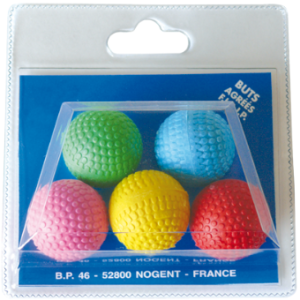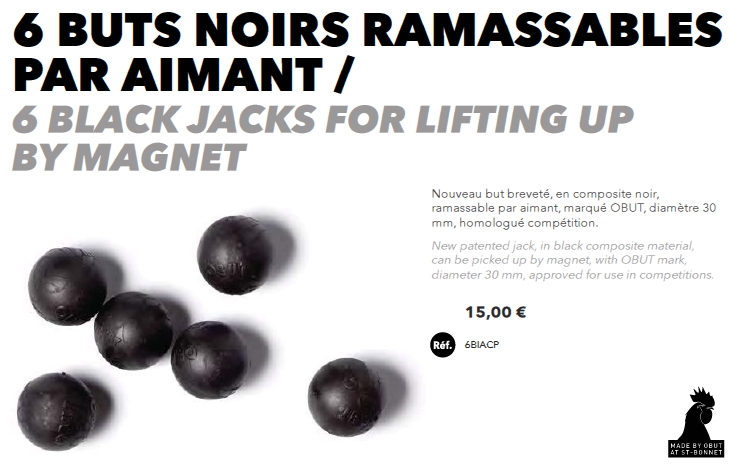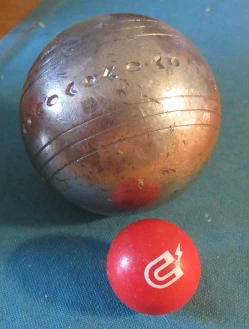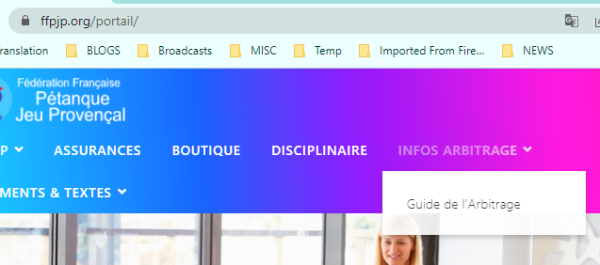[revised 2023-11-03]
Go to a detailed explanation of the FIPJP rules for time-limited games.
Big competitions have a problem. Even with a single-elimination format, many rounds of games must be played in order to reduce the field of competitors to the eight teams that will play in the quarter-finals. Most games in one round need to have finished before the survivors can be paired up for the next round to begin. This can seriously slow down a large competition. [See the comment by Jac Verheul (below).]
One goal for big competitions, then, is to find a way to play short-form games— games that can be played in a limited and predictable amount of time. There are three ways to do it.
- You can play to a winning score of less than 13.
- You can limit the time allowed for the game.
- You can limit the number of menes (ends) played.
In the last two cases, if the allotted amount of time or number of menes has completed and the score is tied, then you need a mechanism for breaking the tie. A natural suggestion is to play one additional “tie-breaker mene”. Unfortunately, this cannot guarantee that the tie will be broken. The mene can still end without either team scoring a point— the jack could be killed while both teams still have unplayed boules; or the mene could end with a null point due to an equidistant boules situation or all boules being shot out-of-bounds.
One way to enhance the effectiveness of a tie-breaker mene is to add a special rule that during the tie-breaker mene the jack is not allowed to go dead. If the jack is hit out-of-bounds, it is put back on the terrain and the game continues. (If it was marked, it is put back on the mark. Otherwise, it is put on the terrain near the spot where it crossed the dead-ball line.) This still isn’t entirely satisfactory— the mene can still end with a null point. Still, it is an improvement, and perhaps good enough for practical purposes.
Older Rules for Time-limited games
For many years competition organizers looked to the CEP (Confédération Européenne de Pétanque, the organizer of the Eurocup) for a model for how to organize time-limited games.
The first CEP rule was that, when playing time-limited games, when the time-limit was announced (by a whistle, say), any mene in progress was played to its finish. At that point, if one of the teams was in the lead, then that team was the winner. If the score was tied, one additional tie-breaker mene was played. The problem with this procedure was that as a game approached its time-limit, the team in the lead would often deliberately play slowly, “running out the clock” and limiting their opponents’ opportunities to score more points. The CEP apparently considered this tactic to be contrary to the spirit of the game. Mike Pegg reports
When timed games were first introduced, one more end was played after the whistle was blown. Teams would deliberately play slowly, taking a full minute etc., so that the opponent had no chance of winning or drawing with them. To prevent this sort of tactic, it was decided to allow for two extra ends.
Current Rules for Time-limited games
In the current rules for time-limited games, games are played to the normal winning score of 13. Any game that hasn’t finished when the time limit is reached, then switches to a limited-number of menes (ends, rounds) model.
- Games are played as they normally are. When one team achieves the winning score of 13, the game is finished and the team with the winning score is the winner.
- For any game that has not finished when the time-limit is reached, the teams finish playing the mene that is currently in progress. At that point, if neither team has achieved a winning score of 13, the game continues for two more “extra” menes. During those menes, if one of the teams reaches 13 points, the game is over and that team wins.
- After the second extra mene, if neither of the teams has reached 13 points, but one of the teams has more points than the other, the game is over and the team with the most points wins.
- After the second extra mene, if the score is tied, the game plays a “final” mene. In this mene, special rules apply— the jack is not allowed to go dead. (If the jack is moved to a place where it is dead, it is put back on its original mark and play continues.) If the mene ends with one team having more points than the other, the game is over and the team with the most points wins.
- After the final mene, the score may still be tied if the mene ends in a null point. In such a situation, the teams play another “final” mene.
Go to a detailed explanation of the FIPJP rules for time-limited games.
Where these rules are specified
As of August 2023, these rules are specified by the CEP (the European Petanque Confederation) on the CEP documents page. (Under the “Championships” heading, see the link for “Singles, Doubles, and Triples: Rules”. It will take you to a pdf file whose internal name is “European Championship Regulations 2023-24”)
18.04 The time limit for each game is:
• Singles: 45 minutes
• Doubles: 60 minutes
• Triples: 75 minutes
18.05 In each format, the teams will be informed that the time limit has expired.
18.06 At the end of the time limit, the current end will be completed and if no team has reached 13 points, two more ends will be played.
18.07 If the score is tied, after the two additional ends, the teams play an extra end.
18.08 During this extra end, the jack cannot become dead (out of play). If the jack goes out of the defined playing area it is returned to its original position.
As of August 2023, these rules are specified by the FIPJP in the FIPJP rules for the world championships, the Règlement des Championnats du Monde. (On the FIPJP web page), click on “MENU” in the upper right-hand corner, then on “Rules and Regulations”, then on “Rules Championships”. Then look for Article 19.
All games of the world championships are played in 13 points, with the exception of the games for which a limited time is applied: one hour and a quarter for the men’s world championship in triplets, one hour for the other world championships in triplets and for the doubles world championships, 45 minutes for the individual world championships.
If neither team has reached 13 points before the end of the fixed time, it will be contested for up to two additional ends. In the event of a tie at the end of the extra ends there will be a final end in which the jack, if it can be moved, will never be lost.
An interesting consequence of a seemingly-unrelated rules change
Before 2020, a thrown jack was required to be at least a meter or half a meter from a side dead-ball line. In 2020 the rules changed, allowing the jack to be thrown right next to a side dead-ball line. This introduced an interesting new tactic into time-limited games. Now, at the start of the first or second extra mene, if a team is leading (with a higher score than their opponents) they may choose to throw the jack very close to a side string. Then, rather than pointing with their first boule, they shoot the jack out-of-bounds. This ends the mene without changing the score. Doing this, a team that is in the lead at the beginning of the first or second extra mene can— if they have a good shooter— virtually lock in their victory.





 There are a lot of boules on the ground. Team A has the point and one unplayed boule. Team B should play next, if they have any unplayed boules.
There are a lot of boules on the ground. Team A has the point and one unplayed boule. Team B should play next, if they have any unplayed boules.




